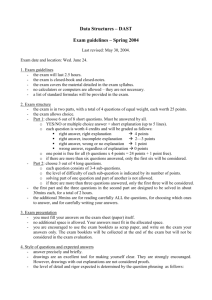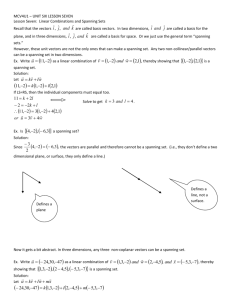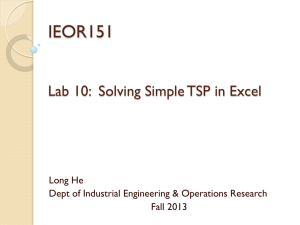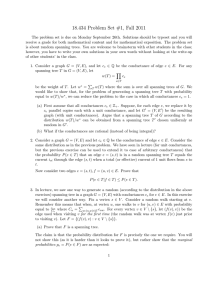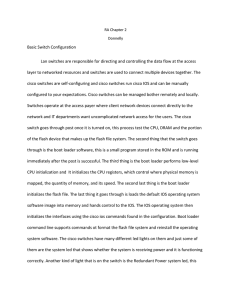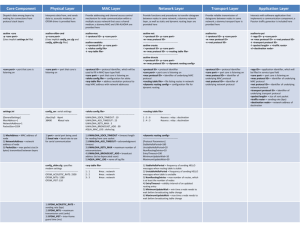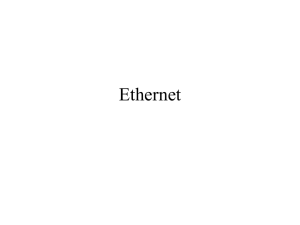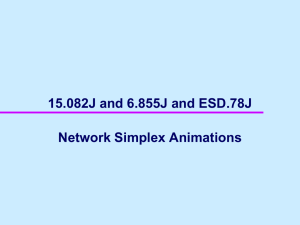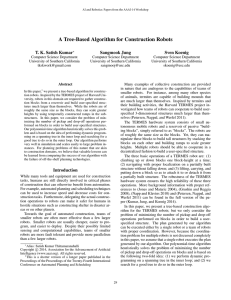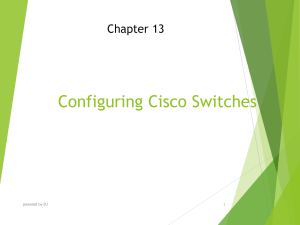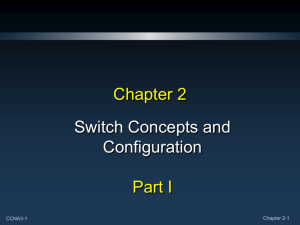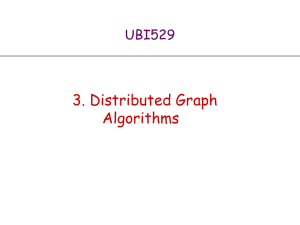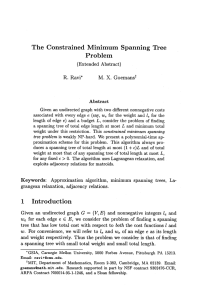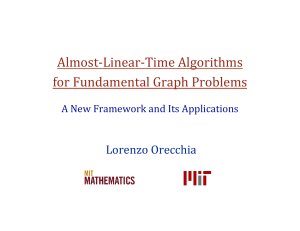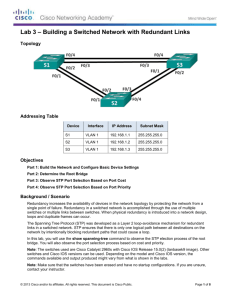Sample Midterm
advertisement
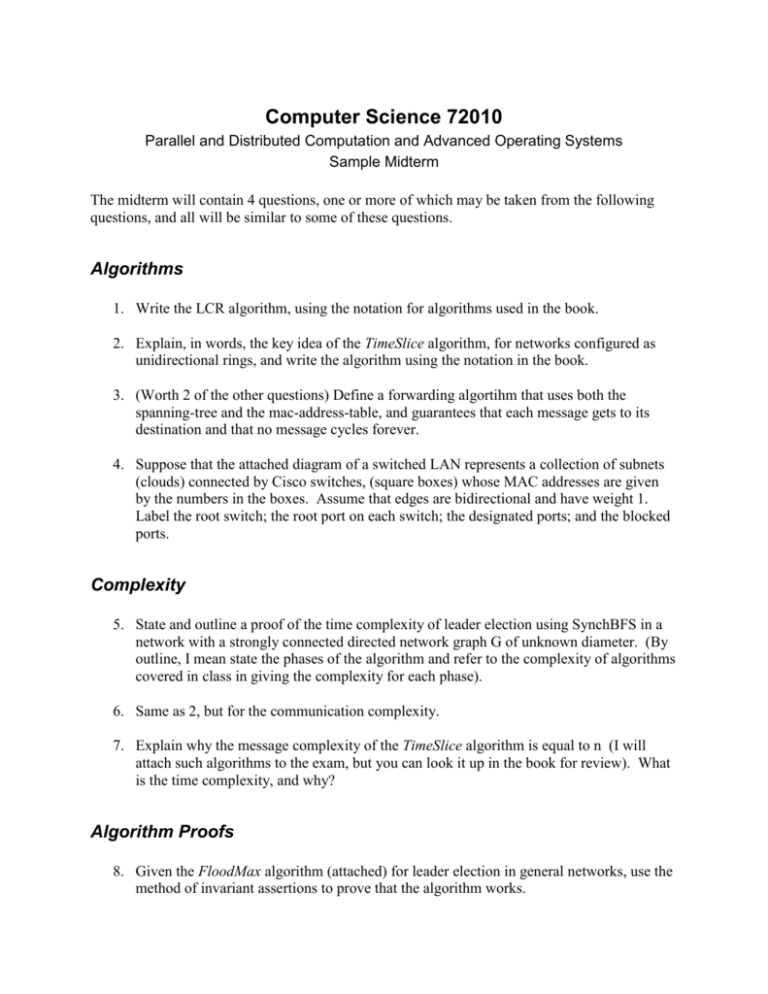
Computer Science 72010 Parallel and Distributed Computation and Advanced Operating Systems Sample Midterm The midterm will contain 4 questions, one or more of which may be taken from the following questions, and all will be similar to some of these questions. Algorithms 1. Write the LCR algorithm, using the notation for algorithms used in the book. 2. Explain, in words, the key idea of the TimeSlice algorithm, for networks configured as unidirectional rings, and write the algorithm using the notation in the book. 3. (Worth 2 of the other questions) Define a forwarding algortihm that uses both the spanning-tree and the mac-address-table, and guarantees that each message gets to its destination and that no message cycles forever. 4. Suppose that the attached diagram of a switched LAN represents a collection of subnets (clouds) connected by Cisco switches, (square boxes) whose MAC addresses are given by the numbers in the boxes. Assume that edges are bidirectional and have weight 1. Label the root switch; the root port on each switch; the designated ports; and the blocked ports. Complexity 5. State and outline a proof of the time complexity of leader election using SynchBFS in a network with a strongly connected directed network graph G of unknown diameter. (By outline, I mean state the phases of the algorithm and refer to the complexity of algorithms covered in class in giving the complexity for each phase). 6. Same as 2, but for the communication complexity. 7. Explain why the message complexity of the TimeSlice algorithm is equal to n (I will attach such algorithms to the exam, but you can look it up in the book for review). What is the time complexity, and why? Algorithm Proofs 8. Given the FloodMax algorithm (attached) for leader election in general networks, use the method of invariant assertions to prove that the algorithm works. 9. Consider a collection of networks connected by Cisco switches, running the spanning tree algorithm. Define a root path as a sequence of switches s1, s2, ..., sn such that the root port of si is connected to si+1. (Note that si+1 is closer to the root than si.) Let M be the switch with the smallest MAC address in a network. Prove by induction that after r rounds, if switch s is at distance r from M, that s has its root equal to M and there is a root path from s to M. Examples/Counterexamples 10. Construct counter-examples to the following statements: a. The Cisco spanning tree algorithm computes the same tree as SynchBFS using the node with the smallest MAC address as the start node. b. The Cisco spanning tree algorithm computes a minimum weight spanning tree 11. Prove the statement or construct a counter-example: a. In the attached forwarding algorithm, each message reaches its destination. b. No message can cycle forever using the attached learning bridge algorithm (see lecture notes). 12. For the shortest-path algorithm: a. Trace the algorithm in Graph 1, assuming the start node is 1. b. Construct an example showing that the time complexity can be n-1, where n is the number of nodes in the graph. Forwarding Assume that a spanning tree has been constructed for a network, and each process has a root port leading to the root node. Assume that M is the type of the messages; Set[M] is a set of messages of type M states id:Int, root:Int queue:Set[M] msgs send all messages in queue out the root port (i.e., to the parent process in the spanning tree) trans put each incoming message in queue
